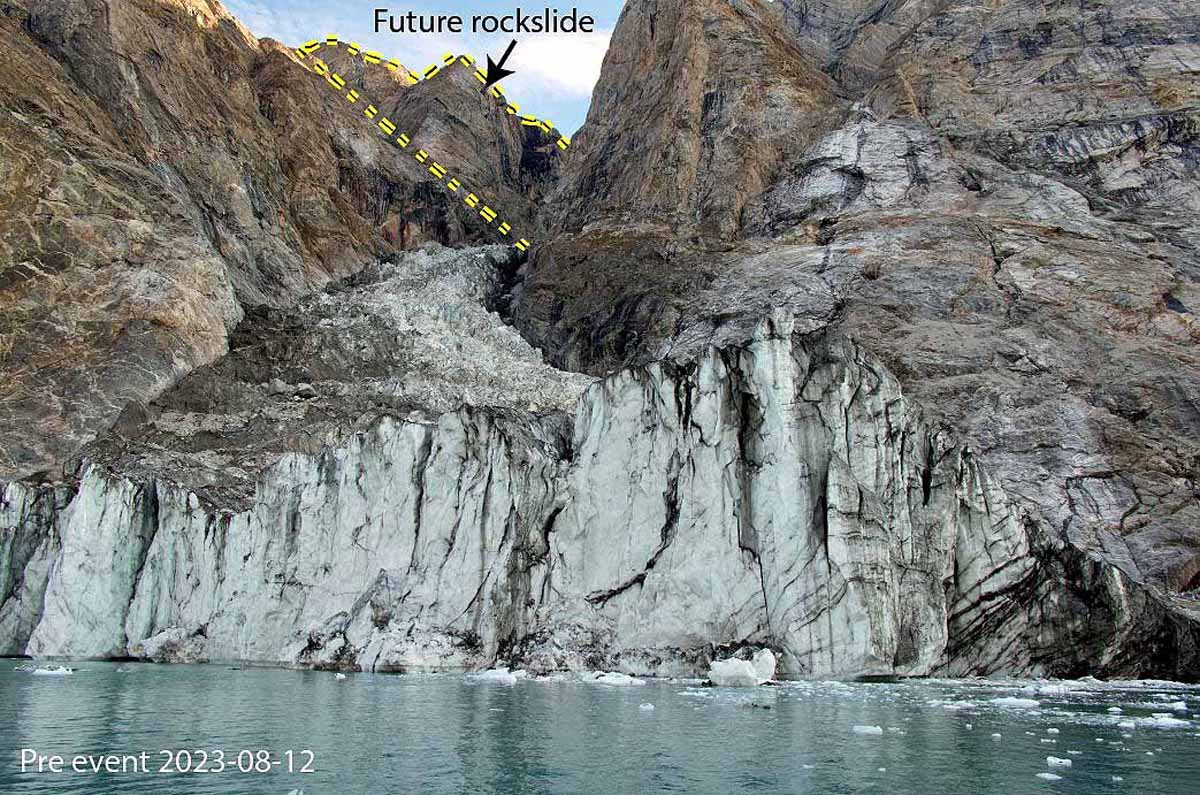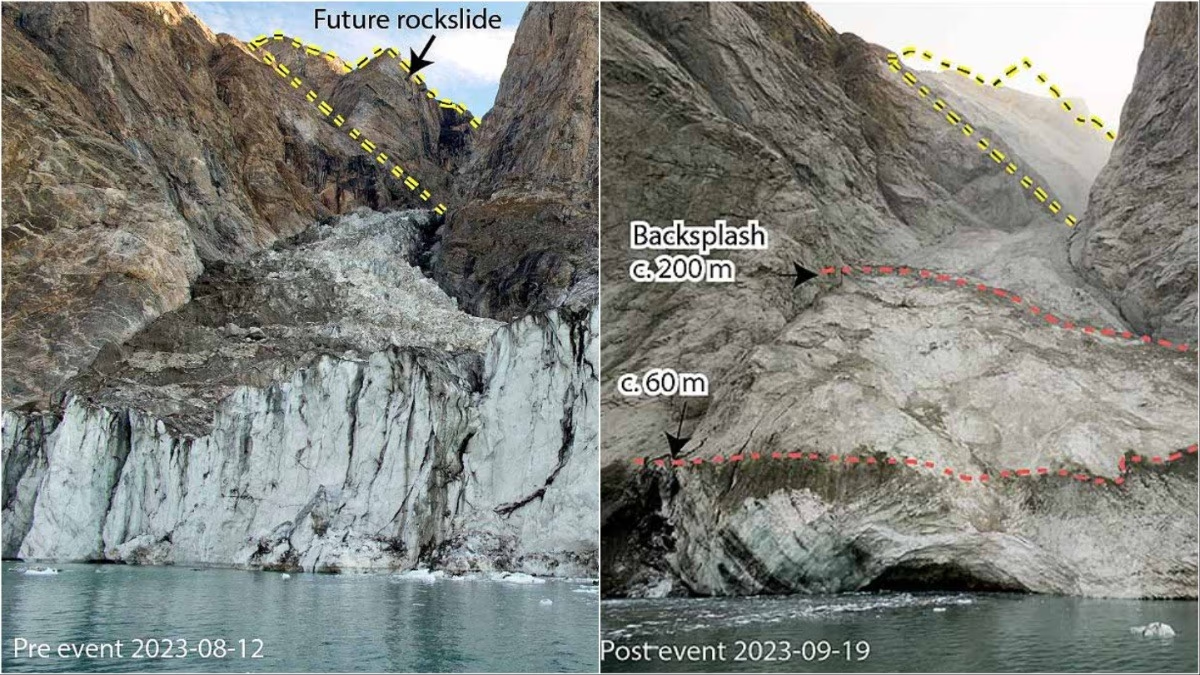In September 2023, a 650-feet tall wave emerged in Dicson Fjord, Eastern Greenland. The water was surging back and forth, akin to swishing water in a bowl. These movements induced mysterious earthquakes in Earth's crust that were felt continuously for nine days.
The seismic waves from these quakes spread worldwide. Scientists were puzzled about their origin. Through satellite and ground imagery, they discovered that a mountain's upper part near Dicson Fjord had become unstable due to climate change. Meanwhile, a glacier beneath was rapidly melting and collapsing. This study was published on September 12, 2024, in the
journal.
Related: 30% more rain, 22 days of extreme rainfall... August proved to be stormy for people
Kristian Swenwig, a geologist from the Geological Survey of Denmark and Greenland (GEUS), said this was a baffling phenomenon with no prior hints of where these seismic signals originated.
The Story Behind the Earthquake
In reality, the glacier at Dicson Fjord was melting from below. The water in front of it had two layers. The first layer was cold and clear, while deeper down, there was warm, salty water. Huge chunks of ice from the glacier were breaking off and falling into the fjord, creating towering waves approximately 650 feet high.
Related: Has India's Flood Map Changed? Previously Bihar and UP were ravaged, but now these states face 'water disasters'

Source: aajtak
When such a colossal wave moves back and forth across a large area, it impacts Earth's upper crust, causing earthquake-detecting instruments to register continuous seismic activity. This constant monitoring showed earthquake waves for nine days, spreading worldwide.
Another reason for the mega-tsunami in the fjord was the unstable peak of a mountain tumbling down. This event unloaded 25 million cubic meters of rock and ice, equivalent to the area of 10,000 Olympic swimming pools, straight into the fjord, amplifying the tsunami's power.
Related: India's 'Secret Missile' Successfully Tested, It Strikes at 1.5 km/s

Source: aajtak
What are Fjords?
In Greenland, valleys situated between tall mountains that connect to the sea are known as fjords. They are capped with substantial glaciers. The breakage of these glaciers can result in massive tsunamis within the fjords.




